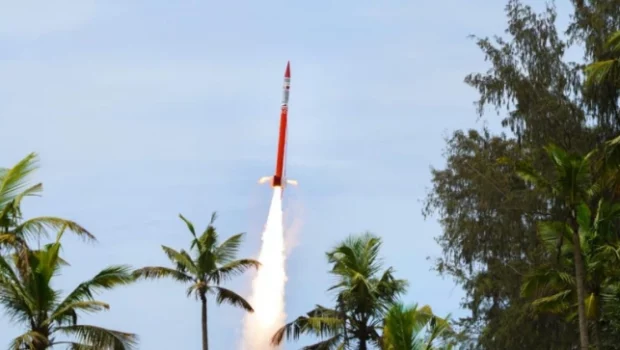The Indian Space Research Organisation (Isro) has successfully tested the Inflatable Aerodynamic Decelerator (IAD) that will be used for landing payloads on Mars or Venus in the future. The IAD is being developed for aerodynamically decelerating an object descending through the atmosphere.
The technology was folded and kept inside the payload bay of a sounding rocket that was launched from TERLS Thumba. The rocket took the IAD to an altitude of 84 kilometers where it was inflated and descended through the atmosphere with the payload part of the sounding rocket.
Isro said that the main objective of this mission was to demonstrate IAD technology for application in spent stage recovery and planetary entry.
Also Read | Artemis-1 suffers fuel leak, second launch attempt scrubbed
In a brief, Isro revealed that the IAD is kept stowed in the nosecone of the single-stage Rohini-300 (RH300MKIl) Sounding Rocket. "At 100 seconds after take-off, the nosecone is separated, followed by the inflation of IAD at 110 s, using compressed Nitrogen stored in a gas bottle. The payload is separated from the motor at 200 seconds after take-off, by using an FLSC separation system," Isro said.
(Graphic: Isro)
During the test, the IAD systematically reduced the velocity of the payload through aerodynamic drag and followed the predicted trajectory. This is the first time that an IAD is designed specifically for spent stage recovery. "All the objectives of the mission were successfully demonstrated," Isro said.
"This demonstration opens a gateway for cost-effective spent stage recovery using the Inflatable Aerodynamics Decelerator technology and this IAD technology can also be used in ISRO's future missions to Venus and Mars," Isro chief S Somanath, said in a statement.
Also Read | Why should melting Himalayas scare you? Look at Pakistan
The IAD is made out of Kevlar fabric, coated with Polychloroprene. Since it is made of fabric, IAD can be packed into a small volume of 15 liters, available in the nosecone of the RH300.
Saturday's mission was a test bed for nine new elements developed in the Vikram Sarabhai Space Centre & LPSC, which includes the following:
* Inflatable Aerodynamic Decelerator & Inflation system
* Micro Video Imaging System
* Software Defined Radio Telemetry-Dual Transmitter (SDRT-DTx)
* Acoustics Processing Unit with mini-IMAS (Indigenous MEMS Acoustic Sensors)
* New software for wind compensation for TERLS
* Modified nosecone separation system
* Modified FLSC separation system for RH300
* Improved 1s delay detonator for spin rocket separation
* Thermally conducting and electrically insulating potting compound ATCAP-75-7030
Also Read | International Space Station is dangerous and unfit, says Russia
--- ENDS ---








Gloss